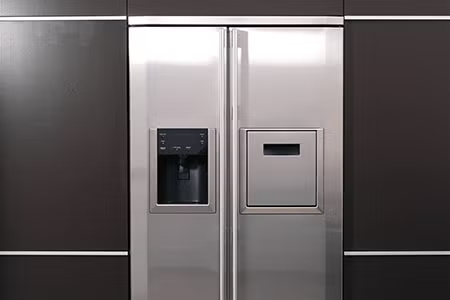
Like most consumers, you want energy-efficient, stylish and long-lasting appliances. You expect your refrigerator and freezer to keep your food and beverages fresh. An unreliable or inefficient refrigerator can cause food to spoil prematurely, resulting in more time and money at the grocery store and higher energy bills. So what’s the connection to diisocyanates? Refrigerators, freezers, coolers and many other appliances are made with insulation made of rigid polyurethane foam to improve their performance and reduce energy usage. Pour-in-place foam or spray foam systems may also be used for certain types of appliances and many other uses. Diisocyanates (DII) chemistry is used to make the rigid polyurethane foam chosen by appliance manufacturers for its excellent insulating properties, low water permeability and structural rigidity.
How Diisocyanates Chemistry and Polyurethane Insulation Improve Appliances
Rigid polyurethane foam is found between the outer layers of appliances, like the ingredient between the slices of bread on a sandwich. Many refrigerators and freezers are made with an outer shell of sheet metal and an inner liner, commonly made with polystyrene plastic. Sandwiched in between, there is often a layer of rigid polyurethane (PU) foam insulation.
This rigid PU foam can be custom-made to meet the appliance manufacturers’ requirements thanks to the flexibility of DII chemistry. The foam’s adhesive properties create a strong bond between the outer and inner appliance walls and its thermal insulation properties help control heat exchange between the interior and exterior. During production in the factory, the foam hardens, or cures, inside the appliance before it is shipped.
In addition, polyurethane-based coatings may be used to paint appliances to protect them from rust and heat, while giving them a stylish design. Also, the wiring and tubing in your appliance may use polyurethanes, often thermoplastic polyurethane (TPU), for its flexibility and ability to withstand harsh temperatures and conditions.
In addition to large appliances such as refrigerators, freezers and water heaters, rigid polyurethane foam is also used to insulate smaller items such as coolers, cold boxes and lunch boxes.
Improving Energy Efficiency
Energy efficiency remains a key focus for the U.S. appliance industry, which is working to enact new, high standards of efficiency through the Energy Efficient and Smart Appliance Agreement. In 2020 the ENERGY STAR program reported that ENERGY STAR labeled refrigerators consumed 10% less energy compared to refrigerators just meeting the minimum energy efficiency standards. Polyurethane foam technology made with DII chemistry plays a critical role in helping the appliance industry achieve this standard. With more than 53.9 million units sold in the United States in 20231, the potential for energy savings through this new program is significant.
Pour-in-Place Foam
In addition to the PU foam found in many household appliances, DII chemistry is also used to create pour-in-place rigid PU foam and spray polyurethane foam (SPF) that allows manufacturers to mold the foam to varying and complex shapes. For some applications, it is important to be able to pour or spray the foam on site—or “in place”—outside of a factory setting. In the trucking industry for example, pour-in-place rigid PU foam is used to manufacture refrigerated trailers for food transportation. Commercial display cabinets and chillers that you might find at your local grocery store also rely on pour-in-place or SPF foam. For industrial use, complicated shapes such as large storage tanks, vessels and pipe work use SPF and slabstock PU foam not only for insulation, but to resist corrosion, moisture and to provide structural support. This enhances safety for workers and surrounding communities.
Both pour-in-place and SPF are used for marine products such as surfboards, windsail boards, buoys and life jackets. In boating, it is also used for the flotation chambers in leisure craft. And what about that flat screen television or computer you enjoy? Not only are polyurethanes used inside as part of the electronics , pour-in-place PU foam and sometimes shaped pieces of rigid PU foam are used in packaging to protect high value electronics and other fragile goods.